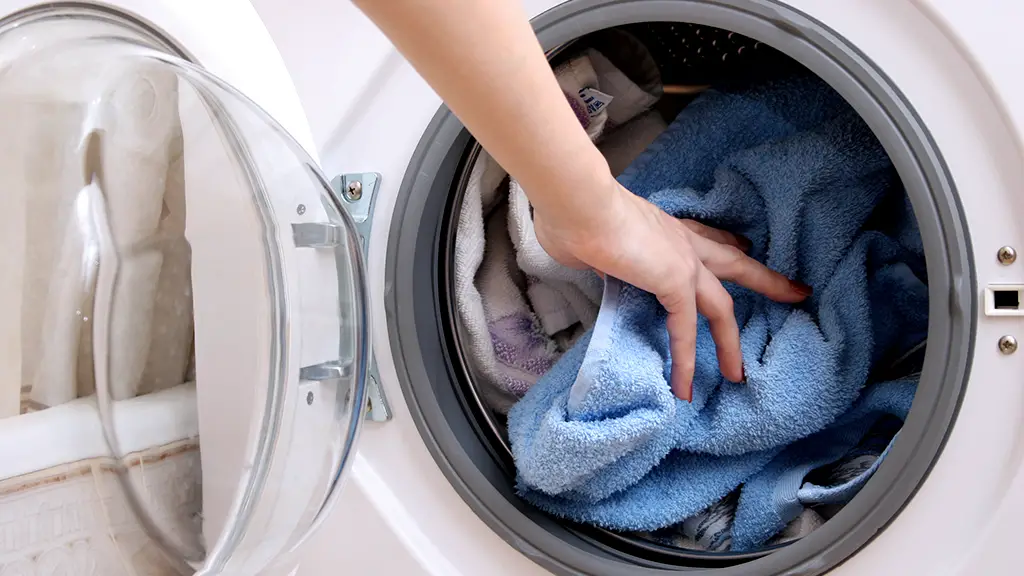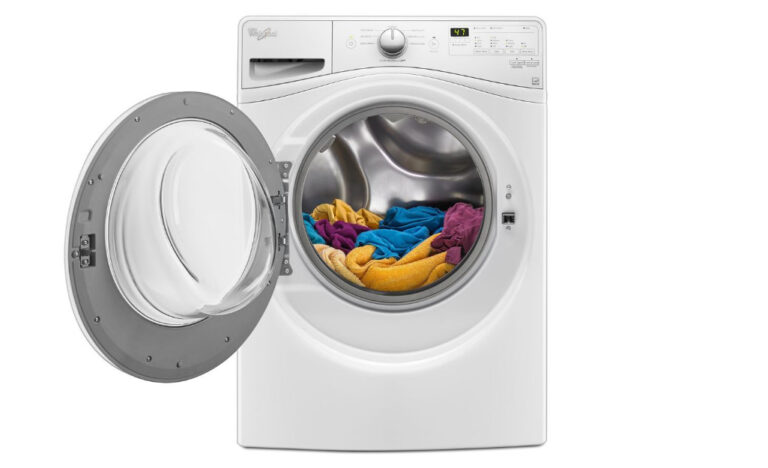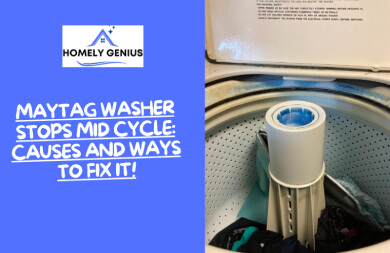Washer Machine Not Washing: Troubleshoot Common Issues Now

A washer machine may not wash properly due to a clogged filter or a malfunctioning motor. Checking these components can resolve the issue.
A washer machine not washing clothes effectively can be frustrating. Several common issues could cause this problem. Blocked filters or malfunctioning motors often result in poor washing performance. Inspecting and cleaning the filter can restore functionality. Regular maintenance prevents many washing machine issues.
Also, ensure that the motor operates correctly. Problems with the water supply or drainage system can also affect washing efficiency. Addressing these areas can improve washer performance. Keeping your washer in good condition saves time and effort. Always follow the manufacturer’s guidelines for maintenance. Proper care extends the lifespan of your washer machine.

Credit: m.youtube.com
Check Power Supply
If your washer machine isn’t washing, the power supply could be the problem. Ensuring the machine receives electricity is essential. Start by inspecting the power cord and verifying the outlet’s functionality.
Inspect Power Cord
The power cord connects your washer to the power outlet. If the cord is damaged, the washer won’t work.
- Unplug the washer from the outlet.
- Examine the entire length of the cord.
- Look for signs of wear, fraying, or breaks.
- If the cord is damaged, replace it immediately.
Using a damaged power cord is dangerous. It can cause electric shocks or fire.
Verify Outlet Functionality
The power outlet must be in good condition. A malfunctioning outlet won’t power your washer.
- Unplug the washer from the outlet.
- Plug in another appliance to the same outlet.
- Check if the appliance powers on.
- If the appliance doesn’t work, the outlet may be faulty.
- Consult an electrician to fix the outlet.
Sometimes, resetting the outlet’s circuit breaker can solve the issue. Locate your home’s circuit breaker panel and reset the washer’s breaker.
| Step | Action |
|---|---|
| 1 | Unplug the washer. |
| 2 | Inspect the power cord. |
| 3 | Verify outlet functionality. |
| 4 | Reset the circuit breaker. |
A working power supply is crucial for your washer machine. Follow these steps to ensure it gets the power it needs.
:max_bytes(150000):strip_icc()/washing-machine-wont-drain-2718776-hero-2441a4ba9ea04f9daa3b8662ae75c624.jpg)
Credit: www.thespruce.com
Examine Water Supply
If your washer machine isn’t washing, examine the water supply first. A proper water supply is essential for the washer to function. Without water, the machine can’t wash clothes. Let’s look at what to check.
Check Water Inlet Valves
The water inlet valves control water entry into the washer. If the valves are blocked, the washer won’t fill with water. To check the valves, follow these steps:
- Unplug the washer machine.
- Locate the water inlet valves at the back of the machine.
- Inspect the valves for debris or blockages.
- Clean any visible debris with a soft brush.
- Ensure the valves are open and water is flowing.
Regular checks can prevent future issues. Clean valves ensure proper water flow and washing efficiency.
Inspect Hoses For Kinks
Water hoses connect the washer to the water supply. Kinked hoses can restrict water flow, affecting the wash cycle. To inspect the hoses:
- Turn off the water supply to the washer.
- Disconnect the hoses from the back of the machine.
- Lay the hoses flat and check for kinks or bends.
- Straighten any kinks you find.
- Reconnect the hoses and turn the water supply back on.
Ensure the hoses are in good condition. Replace damaged hoses to avoid leaks and ensure smooth water flow.
Assess Washer Settings
Is your washer machine not washing as it should? Sometimes, the problem lies in the settings. By assessing your washer settings, you can often fix the issue without needing a technician. In this section, we’ll explore how to confirm cycle selection and verify load size.
Confirm Cycle Selection
First, make sure you have selected the correct cycle. Different cycles are designed for different types of laundry. Check the washer’s manual for guidance. Here’s a quick guide:
- Normal Cycle: Everyday clothes like t-shirts and jeans.
- Delicate Cycle: Fragile fabrics like silk and lace.
- Heavy Duty: Tough fabrics like towels and bed sheets.
If the cycle is set incorrectly, your clothes may not wash properly. Always double-check before starting the wash.
Verify Load Size
An overloaded washer can also cause washing issues. Verify the load size to ensure optimal washing. Here’s how:
- Small Load: About 1/4 of the drum.
- Medium Load: Around 1/2 of the drum.
- Large Load: No more than 3/4 of the drum.
Overloading can prevent clothes from moving freely. This leads to poor washing results. Always refer to the washer manual for specific load size recommendations.
Inspect Door Lock
Are your clothes still dirty after a wash? The door lock might be the problem. A faulty door lock can stop the washer from working properly. Let’s inspect it and fix the issue.
Ensure Door Is Fully Closed
First, check if the washer door is fully closed. If the door is not shut tight, the washer will not start. Push the door until you hear a click. This sound means the door is locked.
Look around the door seal. Make sure no clothes or debris are stuck. These can prevent the door from closing fully.
Check Door Latch Mechanism
Next, inspect the door latch mechanism. The latch keeps the door locked during the wash. If it’s broken, the washer will not work. Look for any visible damage or wear on the latch.
Use a flashlight to see better. If the latch looks worn, it may need replacement. You can buy a new latch online or at a hardware store.
Follow these steps to replace the latch:
- Unplug the washer from the power outlet.
- Remove the screws holding the latch in place.
- Take out the old latch and install the new one.
- Secure the new latch with screws and plug the washer back in.
Test the washer by closing the door and starting a wash cycle. If the washer still does not work, there might be another issue. Consider calling a professional for help.
Evaluate Washer Drum
If your washer machine is not washing clothes properly, the drum might be the issue. The washer drum is where you load your clothes. It’s crucial to ensure it’s working correctly. Let’s dive into some steps to evaluate the washer drum.
Look For Obstructions
First, check for any obstructions inside the drum. Small items can get stuck in the drum holes. Things like coins, buttons, or hairpins can cause problems.
- Turn off the washer and unplug it.
- Open the washer door and inspect the drum.
- Look inside the drum holes for any stuck items.
- Remove any obstructions you find.
These obstructions can prevent the washer from spinning properly. Removing them can help the washer clean better.
Check Drum Balance
Next, check the drum balance. An unbalanced drum can cause poor washing performance. Follow these steps to check the drum balance:
- Ensure the washer is on a level surface.
- Place a level tool on top of the washer.
- Adjust the washer feet until the bubble is centered.
A balanced drum spins smoothly and cleans clothes more effectively. Ensuring the washer is level helps achieve this balance.
| Step | Action |
|---|---|
| 1 | Turn off and unplug the washer |
| 2 | Inspect the drum for obstructions |
| 3 | Check if the washer is on a level surface |
| 4 | Adjust feet to balance the washer |
By following these steps, you can improve your washer’s performance. Regular maintenance keeps your washer running smoothly. Happy washing!
Review Drainage System
Experiencing issues with your washer machine not washing? It’s often due to problems in the drainage system. A proper review of the drainage system can solve many washing machine issues. Focus on key areas like the drain hose and blockages.
Inspect Drain Hose
First, inspect the drain hose. Make sure it is properly connected. A loose or disconnected hose can cause drainage problems. Ensure the hose is not kinked or bent. A bent hose can restrict water flow. This can prevent the washer from draining properly.
Look for any visible damage. A cracked or damaged hose needs replacement. Check the length of the hose too. A hose that is too long can cause siphoning issues. Make sure the hose is at the correct height, usually between 18-30 inches from the ground.
Check For Blockages
Next, check for blockages. Remove the drain hose from the machine and the standpipe. Use a flashlight to look inside the hose. Small items or debris can get stuck inside. Clear any blockages you find.
Also, check the standpipe for obstructions. A clogged standpipe can cause drainage issues. Use a plumber’s snake to clear any blockages. Make sure the standpipe is not blocked.
You can use the following checklist to ensure thorough inspection:
- Inspect hose for kinks or bends
- Check hose connections
- Look for visible damage on the hose
- Ensure hose is at correct height
- Inspect inside of hose for blockages
- Clear any debris found
- Check standpipe for obstructions
Following these steps can help restore your washer’s functionality. Regular maintenance helps prevent future drainage issues.
Monitor Motor Function
The motor is the heart of your washing machine. If your washer isn’t washing clothes properly, the motor might be the issue. Regular checks on the motor can prevent bigger problems. Here are some steps to monitor motor function effectively.
Listen For Unusual Noises
Strange noises can indicate motor issues. When your washer runs, listen closely. Any grinding, squeaking, or banging sounds can be a warning sign. These noises often mean the motor or other internal parts are malfunctioning. Addressing these sounds early can save you from costly repairs.
Check Motor Overheating
Overheating can damage the motor. To check for overheating, follow these steps:
- Turn off the washing machine.
- Unplug it from the power source.
- Wait for a few minutes.
- Touch the motor with caution. If it’s too hot, it needs attention.
Overheating can be caused by various factors, such as:
- Blocked vents
- Overloading the washer
- Faulty wiring
Regular maintenance can prevent these issues. Ensure the vents are clear, avoid overloading, and check the wiring regularly.
| Issue | Possible Cause | Solution |
|---|---|---|
| Unusual Noises | Internal parts malfunctioning | Inspect and replace faulty parts |
| Motor Overheating | Blocked vents, overloading, faulty wiring | Clear vents, avoid overloading, check wiring |
Examine Control Panel
To troubleshoot your washer machine not washing, start with the control panel. The control panel is the brain of your washer. Malfunctions here can prevent washing cycles from starting. By examining the control panel, you can identify and fix common issues.
Check For Error Codes
Your washer’s display may show error codes. These codes indicate specific problems. Error codes can help you pinpoint what’s wrong. Refer to your user manual for a list of error codes. Some common codes include:
- F01: Motor Error
- E02: Water Supply Issue
- D03: Door Lock Problem
Resolving these codes can often fix your washer’s issues.
Ensure Buttons Are Responsive
Press each button on the control panel. Ensure they respond correctly. Unresponsive buttons may indicate a faulty control panel. Here’s how to check:
- Press the power button.
- Select a washing cycle.
- Start the cycle.
If any button does not respond, the control panel may need repair.
| Button | Expected Response |
|---|---|
| Power | Turns the machine on/off |
| Cycle Selector | Changes washing cycle |
| Start | Begins the washing cycle |
Ensure all buttons perform their intended actions.

Credit: m.youtube.com
Frequently Asked Questions
Why Is My Washing Machine Starting But Not Washing?
Your washing machine may start but not wash due to issues like a faulty lid switch, broken belt, or clogged pump. Check these components for proper functioning. Consult a technician if needed.
Why Is My Washing Machine Not Washing My Clothes?
Your washing machine may not wash clothes due to a clogged filter, faulty water inlet valve, or broken agitator. Check for blockages, ensure proper water flow, and inspect mechanical parts for damage. Regular maintenance can prevent these issues.
Why Is My Washing Machine Filling Up But Not Washing?
A washing machine may fill but not wash due to a faulty lid switch, broken belt, or clogged pump. Check these components.
Why Is My Washing Machine Draining But Not Washing?
Your washing machine might have a faulty motor, broken belt, or clogged water pump. Check these components for issues.
Why Is My Washer Not Washing?
A clogged filter or faulty motor might be the cause. Check for blockages and ensure all parts are functioning.
How Do I Reset My Washer Machine?
Unplug the washer for a few minutes, then plug it back in. This can reset the system.
What Causes A Washer To Stop Mid-cycle?
Power interruptions, faulty timers, or clogged filters may cause this. Inspect these components to identify the issue.
Why Does My Washer Not Spin?
A broken belt or lid switch failure could be the reason. Check and replace these parts if necessary.
Conclusion
A non-functioning washer machine can disrupt your daily routine. Regular maintenance and timely repairs are essential. Check for common issues like clogged filters or faulty belts. If problems persist, consulting a professional can save time and money. Keep your washer in top condition to ensure efficient laundry days.






